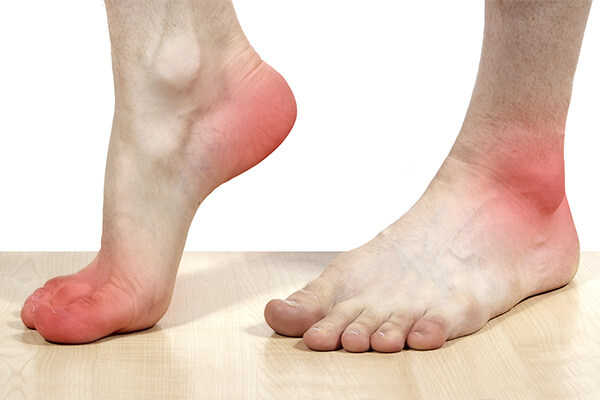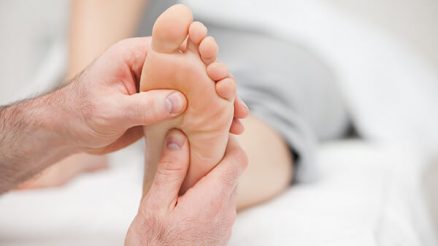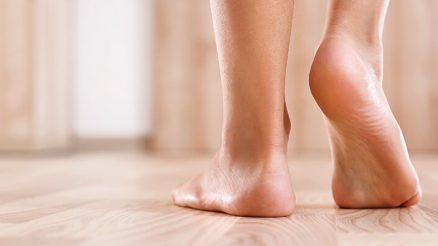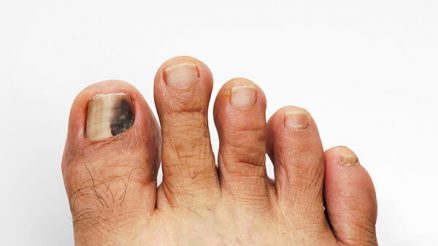
Causes | Diagnosis | Treatment
There are various causes that are related to pain on outside of foot. It is true that others may have experienced other symptoms on the side of foot pain. The condition’s symptoms may vary based on the patient concerned.
To solve your outer foot pain, you need to understand if the pain is due to an injury or has simply developed gradually. Diagnosis of your foot problem might as well be done without the assistance of a doctor, which could serve as an initial evaluation of the ailment.
You simply have to learn the basics of identifying side foot pain. Apart from such, you should also be aware of the possible treatments for outside foot pain.
In order to begin as early as today, read through the following excerpt:
Most Common Causes of Pain on Outside of Foot
There are classic causes of pain on outside of foot. You should consider these as bases in determining if you are suffering from such problem. Given below are the following:
Metatarsal Stress Fracture
This is one of the familiar causes of pain on outside of foot. It is characterized by a fine fracture in one of the bones in the foot, specifically the long metatarsals. The symptoms associated with this pain on side of foot are brought by either poor biomechanics or foot overuse.
Dancing, running, or walking can actually make your side of foot pain worse. It is also possible that you will find an area that is painful to touch. Oftentimes, swelling may also take place due to the outer foot pain.
A common position for this fracture is the second metatarsal. This is usually found in people who have a second toe that is bigger than their big toe.
Fifth Metatarsal Fractures
This is described as the most common pain on outside of foot, and this particularly affects the fifth metatarsal. Be informed that the metatarsals as the most crucial structure in bearing weight on your forefoot. Besides, the fifth metatarsal has a function for biomechanics and blood supply.
The fifth metatarsal is actually the long bone external of the foot, which is responsible for connecting the small toe.
As soon as possible, a patient who encounters problems on side of foot pain and other symptoms related to the fracture must meet a foot and ankle physician immediately.
Basically, there are different fractures that usually occur in the fifth metatarsal, which are the following:
- Avulsion Fractures
This is another fracture that affects the fifth metatarsal. Specifically, it is characterized by an injury to the tendon or ligament’s bone attachment. When it occurs, either the ligament or tendon pulls a bone piece. Besides the side of foot pain, it can also develop anywhere in your body.
This outer foot pain that originates internally is more commonly diagnosed in children than adults. In young people, prior to the injury of tendon or ligament, failure of bone may take place. However, in adults, injury of tendons and ligaments will occur first.
According to experts, the growth plate is found in children, which is a weak spot.
- Jones Fractures
There are people who state that “the outside of my foot hurts,” only to discover that they have Jones Fracture. This problem is another issue that affects the fifth metatarsal’s base. You can also describe this outer foot pain as an extra-articular fracture.
According to experts, the foot hurts on side due to the added strain to the forefoot. Simultaneously, the ankle also moves downward in the sole’s direction.
This outer foot pain may actually heal in more than a couple of months for the fracture is vulnerable to non-union.
- Shaft Fractures
If you are encountering issues on the outside of foot pain, shaft fractures may be your problem. In this case, the injured bone is the shinbone or tibia. Moreover, this area includes the fibula, femur, tibia, and humerus. The pain affects the whole bone length, particularly above the ankle and under the knee.
It has several types. You can begin with a stable fracture that is scantily out of place. On the other hand, you have the displaced fracture that separates the bone’s broken ends. Unlike the first issue, the fractured ends no longer align.
Moreover, you have the oblique fracture that is usually unsteady and results to angled injury. Lastly, you have the transverse fracture that has a fracture line that extends horizontally.
- Head and Neck Fractures
There are also several head and neck fractures that can occur in the metatarsal bone. Two categories are also made to describe these problems. Primarily, the acute fracture is due to abrupt foot injury. For instance, you suffered from a fall or sports physical damage.
Alternatively, you have the stress fracture, which is brought by the normal metatarsal bone’s repetitive harm or overuse.
Hammertoe
Though you think that the outside of foot pain is only due to overuse of a certain body part, then you should think again. There is a possibility that you are suffering from hammertoe, which is characterized by the deformity of the fourth, third, or second toe.
If your shoes have small to zero support for your foot arch, hammertoe may take place. It is called hammer for the toe flexes downward. Moreover, it is characterized by ligaments, tendons, or muscles’ imbalance.
Bunions
If you are encountering lateral foot pain, you may also be suffering from a bony bump on your big toe base’s joint. This develops when your big toe moves toward the smaller toe beside it. As a result, your joint will stick out.
The side of foot pain may also be characterized by soreness and redness. While you are still treating bunions, it is best to avoid narrow and tight shoes.
Bunionette
Similar to a bunion, the side of foot pain in this problem is characterized by an abnormal bone development. Particularly, the bump appears on the fifth toe’s lateral side. At first, it may only be painless and small.
However, as it grows bigger, it will be more painful. It is also advised to wear comfortable shoes while treating the problem.
Tarsal Coalition
Instead of lateral foot pain, this affects the heel and hind part of the foot. Due to this problem, you will develop rigid and acute flatfoot. Children can have it as early as birth. However, its signs will only be observable during the onset of adolescence.
The tarsal coalition, as the name suggests, affects the tarsal bones because of the abnormal attachment of certain bones. It may even cause difficulty in performing physical work.
Cuboid Syndrome
This syndrome takes place when added traction is enforced by the peroneus longus muscle on the cuboid bone. The latter is among the eight tarsal bones that are found in the mid and rear areas of the foot. You can find it in the ankle’s frontal part.
You can consider the symptoms of this pain on side of foot similar to ankle sprain’s. When weight is bore on the external foot, pain becomes worse, thus causing some patients to overpronate.
Peroneal Tendonitis
If you are experiencing pain on side of foot, you may actually be suffering from peroneal tendons. These parts extend behind the external ankle’s bony area, which is called lateral malleolus.
Normal treatment for the problem includes bracing, ice application, and rest. The pain associated with the ailment gets worse when the patient carries out physical activities. Pain may also be felt after pressing the area just outside the ankle.
Corns and Calluses
This is another cause of lateral foot pain that can be very irritating due to the associated skin thickenings in various areas. Apart from the hard skin patch, it may also cause dryness and tenderness.
If you have peripheral arterial disease or diabetes, you will be more prone to this problem since you pose poor feet circulation and vulnerable skin.
There are patients who suffer from it simply due to increase pressure on the feet’s certain points.
Foot Arthritis
As you have learned, arthritis is due to inflammation of joints. According to studies, foot arthritis can also result in pain on the outside of the body part. Common symptoms of the problem are stiffness and pain.
The three major arthritis types that can affect your foot are rheumatoid arthritis, osteoarthritis, and posttraumatic arthritis. Regardless of the type of foot arthritis, you will often find it difficult to carry out activities or even simply walk.
Friction Blisters
If the side of foot pain develops raised skin, you may be suffering from friction blisters, which are also possible causes of pain on outside of your foot. Usually, these soft pockets with clear fluid develop on the feet due to the habit of wearing either narrow or tight shoes.
Apart from the mild damage to your skin and tissues, it may also cause disruption to the small blood vessels. Consequently, it can transform as a blood blister instead.
Ankle Sprain
Foot pain can be due to this type of sprains as well. Commonly, you can suffer from mild to severe forms of it. Almost everyone has encountered a twisted ankle at least once in their lives.
You can determine if you are suffering from ankle sprain if the body part becomes painful and swollen. This is due to the ligaments stretching and tearing.
Victims of the problem are often athletes, who are vulnerable to rapid foot movements.
Ganglion Cyst Foot
As the name suggests, this problem is characterized by cyst development, which contains jelled liquid. This fluid comes from either a joint capsule or tendon sheath. Ganglion actually pertains to a knot that describes the lump associated with the problem.
This cause of foot pain may be found on any part of the foot. It may also appear by itself but can still return. Other symptoms of the cyst formation are a dull pain, burning sensation, and difficulty in using footwear.
Sural Neuritis
When the sural nerve gets injured or irritated, sural neuritis develops. The pain associated with this problem is often felt on the outside of the foot and ankle. In addition, it is characterized by a burning sensation.
You can find the said nerve on the length of your leg. It is also located at the back of your lateral ankle part. Furthermore, you can locate it along the external part of your feet.
The symptoms associated with neuritis can get worse when direct pressure is applied to the affected areas.
Diagnosis of Pain on the Outside of the Feet
It is necessary to undergo diagnosis when you noticed that the pain on the outside of your feet gets worse over time. You need to identify what has caused your ailment. Although there are others who can determine the causes of their foot pain without a doctor, it is still ideal to consult a physician.
In such case, you will not only assess your problem, but you can also find out the most effective treatment options. Otherwise, your treatment may only be applicable for general foot pain. It is more efficient to look for a remedy directed to your problem.
There is a possibility for your foot pain to return if the pain will only get solved for a short term.
Treatment of Pain on the Outside of the Feet
Apart from what your physician can recommend in terms of treating foot pain, you should also be aware of other home remedies. There are common solutions that may somehow ease the discomfort related to your problem.
Here are a few that are easy to carry out:
Rest. This is always the primary solution in order to solve a foot’s lateral pain. It will keep you relaxed and even promote the recovery of your foot trauma.
Hot and Cold Water Exposure. Using this treatment will lessen the pain outside your foot. Cold water is effective in easing inflammation, whereas warm water can promote better blood flow.
To perform the remedy, you need to soak your feet in a warm water bucket for three to five minutes. Afterward, repeat the process but with a cold water bucket, which will last for only 30 seconds to a minute.
You can carry out the treatment for three to five times until you gain relief.
Cayenne Pepper. It may not be an expected solution, but it can deliver a warming sensation and nerve stimulation to your feet. The herb has capsaicin, which is responsible for providing pain relief.
Ice Treatment. This is done by most athletes. They first apply ice on the affected area for approximately 20 minutes.
Clove Oil. This herbal solution is also effective for it has properties against inflammation and pain. Simply massage it onto the affected area to encourage blood circulation.
With the aforementioned facts, you will find it easier to hand pain outside of your foot. You can start diagnosing and identifying the preliminary treatment. For safety, acute pain should be consulted to a physician right away.








